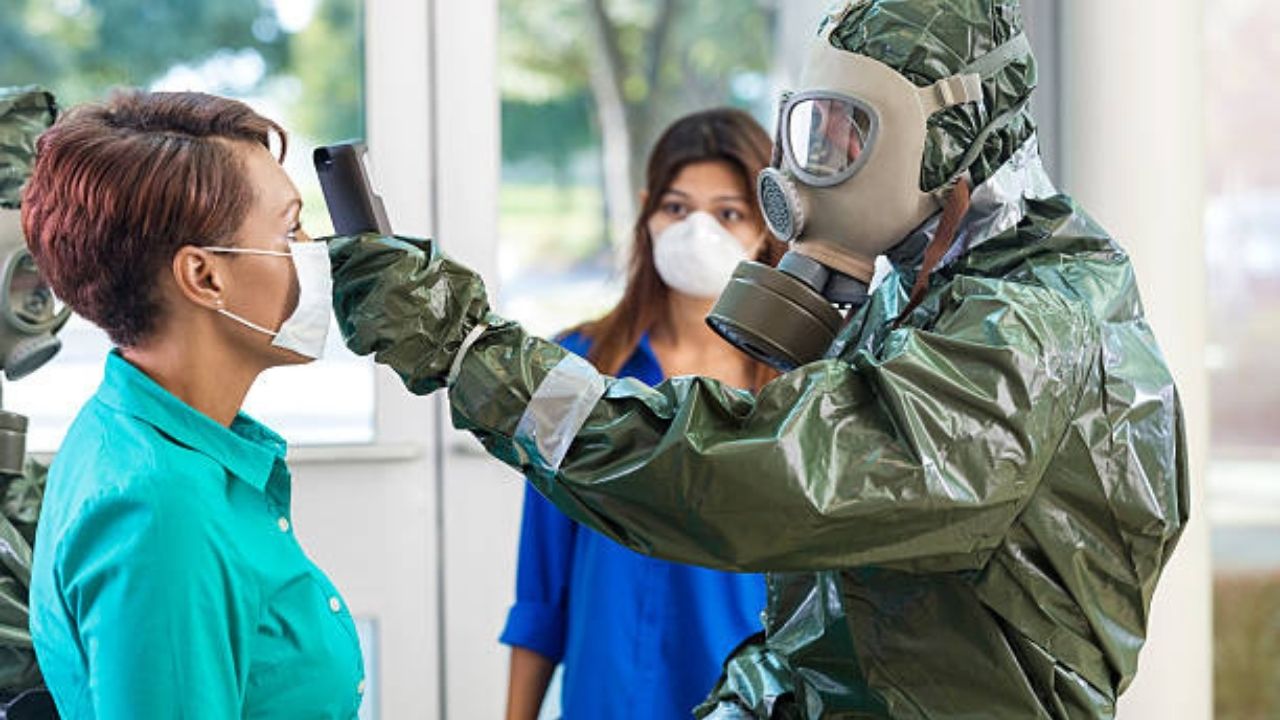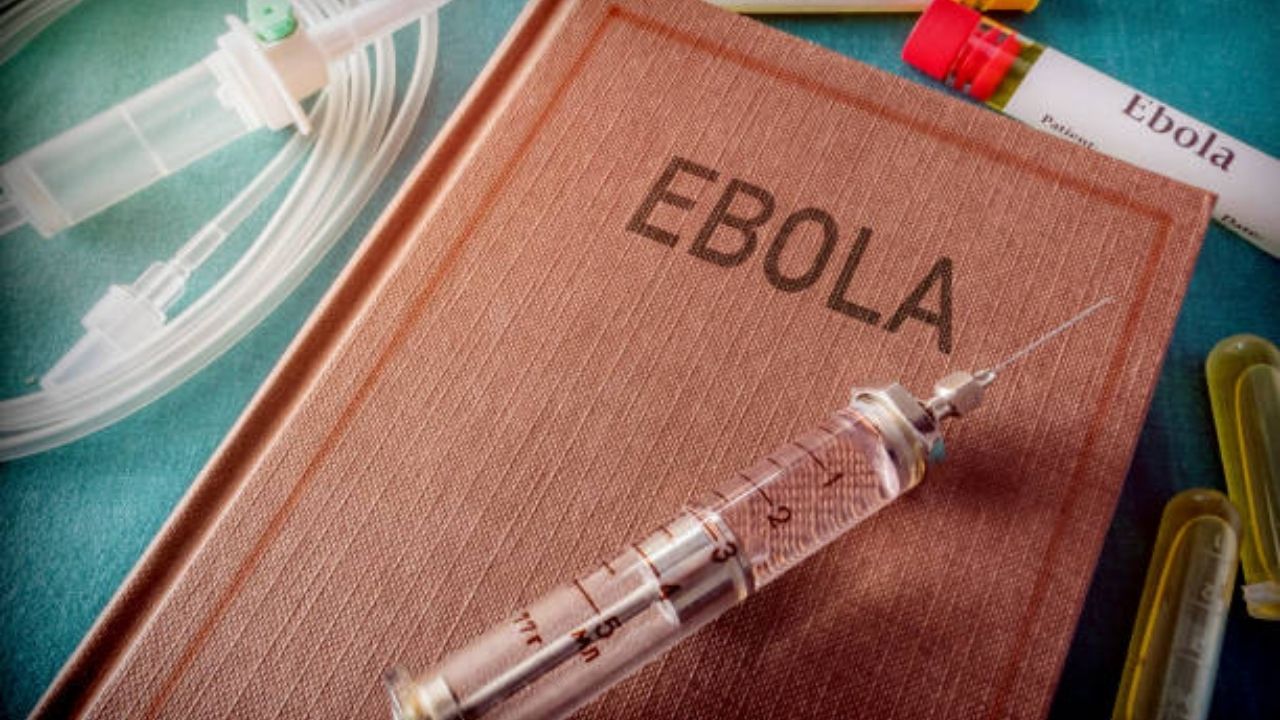Ebola is an often severe infection with fever and bleeding (hemorrhagic fever). In many cases it ends fatally. The disease is caused by the Ebola virus, which is one of the most dangerous pathogens in the world. So far there are no effective drugs against it. Learn more about diagnosis, treatment, prognosis and symptoms for ebola.
ICD codes for this disease: A98
Description of ebola
Ebola (Ebola fever) is a severe virus infection that belongs to the so-called hemorrhagic fevers. These are infectious diseases that are accompanied by fever and an increased tendency to bleed (including internal bleeding). The main risk area is Equatorial Africa, where medical care is often inadequate.
The first infection with the Ebola virus was described in the 1970s in Sudan and Congo. Since then there have been repeated Ebola epidemics. In the past, the disease could usually be contained by strictly isolating the sick, which prevented larger epidemics. In addition, the high mortality rate also limits spread. Death often occurs after just a few days. To date, there are no uniform standards for treating Ebola.
Due to the great danger of Ebola, the pathogen is being discussed as a possible warfare agent. So far, however, there is no evidence of such use. An attempt by the Japanese Aum sect to use Ebola viruses for terrorist attacks in Japan failed.
A pathogen very similar to the Ebola virus is the Marburg virus, also a hemorrhagic fever. Both viruses belong to the filovirus family. They cause similar diseases that cannot be clearly distinguished from each other.
Ebola is notifiable
Ebola is subject to reporting requirements in Germany, Austria and Switzerland. Even the suspicion of an infection must be reported by doctors to the responsible health authority – stating the patient’s name.
Symptoms for ebola

The most common symptoms for ebola are the sudden onset of fever, severe weakness, and muscle, headache, and throat pain, followed by vomiting, diarrhea, skin rashes, and can cause kidney and liver dysfunction. In some cases, internal and external bleeding are also observed. Laboratory results show decreased numbers of leukocytes and platelets, as well as elevated liver enzymes.
Symptoms appear within 3-12 days of exposure. As a clinical criterion, the Spanish Ministry of Health sets the minimum fever threshold to be taken into account at 37.7, along with additional symptoms. There are a number of nonspecific initial signs (fever and malaise, followed by anorexia, headache, myalgia, arthralgia, sore throat and chest pain), initial gastrointestinal symptoms (nausea, vomiting, epigastric and abdominal pain, and diarrhoea) and, usually in advanced stages, hemorrhage in 50 percent of patients, causing death in a few days. In severe cases, the clinical signs are more intense at the onset.
Patients die from complications (multiple organ failure, septic shock) between days 6 and 16 of illness. No severe case improves after six to eleven days.
Patients are contagious as long as the virus is present in their blood and secretions. The Ebola virus is concentrated in semen for up to 61 days after the onset of illness.
The incubation period (from infection to onset of symptoms) ranges from 2 to 21 days.
Severe internal and external bleeding can occur just a few days after the onset of the disease, mainly from the mucous membranes. In addition to the eyes and the gastrointestinal tract, other organs can also be affected.
As Ebola progresses, various organs often fail. An inflammation of the brain (encephalitis) can also occur and further worsen the prognosis. Severe cases of illness are similar to septic shock and can be fatal. Heart failure is often the cause of death.
The course of the disease described is not specific to Ebola! Fever, bleeding, and organ damage also occur with other serious infections. This makes it difficult for doctors to make an accurate diagnosis at first.
Ebola: causes and risk factors
The disease is caused by the Ebola virus, of which five strains are known. So far, three of these virus strains have caused major outbreaks of disease in humans.
Animal-to-human contagion
The Ebola virus is transmitted to humans through close contact with infected animals or infectious animal products. It is assumed that flying foxes form the natural reservoir of the pathogen; however, this is not guaranteed. There is also a risk of infection from other infected animals, especially monkeys and pigs.
For this reason, sick animals should be quarantined as soon as possible. The carcasses of dead animals must be disposed of with care. Raw meat from these animals should not be eaten.
In contrast to many other tropical infections, transmission of the Ebola virus through mosquito bites has not been reported to date.
Contagion from person to person
Human-to-human transmission of Ebola usually occurs only through close contact. In rare cases, the Ebola virus can also be transmitted through coughing (droplet infection).
Sick people are contagious as long as symptoms of the disease persist. Infections during the incubation period (= phase between infection and the onset of the first symptoms) have not been reported to date.
Relatives and nursing staff of Ebola patients in particular are at high risk of becoming infected as well. When the disease broke out in Uganda in 2000, 60 percent of the caregivers contracted the virus. Therefore, Ebola patients must be strictly isolated. All physical contact and the sharing of objects such as cutlery should be avoided.
Possibly persons who were in very close physical contact with the patient (e.g. life partners, children) are also isolated. In any case, the body temperature of each contact person should be checked regularly.
Special care is also required when handling patients who have died of Ebola and during burial. The same applies after recovering from an Ebola infection: Even 61 days after the disease had subsided, the virus could still be detected in the semen of male patients.
Risk of infection when traveling to ebola areas
According to expert opinion, there is usually no increased risk of infection for travelers to areas where Ebola occurs (especially tropical rainforests in Central Africa). Only those who have close contact with infected people are at high risk. Nevertheless, all holidaymakers should find out about the current health situation in the destination region before starting their journey.
Ebola is notifiable
Early warning systems for Ebola are essential to prevent or contain major outbreaks. In Germany, Austria and Switzerland, even suspected cases of Ebola infection must be reported by doctors to the responsible health authority, stating the patient’s name.
Diagnosis of ebola
Especially in the early stages of the disease, it is difficult to differentiate between Ebola fever and other diseases such as yellow fever, Lassa fever, dengue fever or malaria. In suspected cases, patients must be isolated early. Samples are taken to be tested for the Ebola virus. The pathogen can be detected primarily in the blood, but also in the skin. Antibodies against the virus usually only form later in the course of the disease.
Only specialized laboratories with the highest security level are allowed to work with the Ebola virus and examine sample material from patients suspected of having Ebola.
If Ebola is suspected, the patient’s blood values are also closely monitored. In addition, it is precisely checked whether bleeding occurs or organ functions are impaired.
Treatment of ebola
So far there is no specific therapy against Ebola, which is why the mortality rate is very high. There are also no standardized treatment recommendations. Therapy with an antiviral drug can be considered, but has so far – unlike in similar viral diseases – hardly been successful.
However, current studies with two new antibody preparations against Ebola give hope: according to current results, they can apparently cure up to 90 percent of patients if they are administered early. They have already been approved as drugs against Ebola in the USA (in October and December 2020 respectively). There is no approval for Europe (yet).
So far, an Ebola infection can only be treated symptomatically. Patients receive intensive medical care whenever possible. Adequate fluid intake with electrolytes is particularly important. In the case of (threatening) organ failure, an organ replacement procedure must be started quickly, such as dialysis for kidney failure.
In some cases, Ebola patients are also given antibiotics to fight subsequent bacterial infections that can more easily affect the sick body. Sedatives can also be important to relieve patients’ anxiety. In addition, it is essential to control blood clotting.
Disease course and prognosis of ebola
The infection usually begins like a severe flu and then goes into the phase of hemorrhagic fever – so various bleeding occurs. In the further course, organ damage can occur, which significantly worsens the prognosis. It is particularly fatal when important organs such as the kidneys fail.
The generally poor prognosis of the disease is also due to the poorly developed health systems in the areas where the Ebola virus spreads. Symptoms and organ failure often require expensive and modern therapy methods, which are usually not available in such countries.
For these reasons, Ebola leads to death in 25 to 90 percent of cases. Those infected often die just a few days after the onset of the disease. Survivors of an Ebola infection often have to contend with long-term consequences such as psychosis and liver inflammation (hepatitis).
Prevention of ebola
So far, two vaccines against Ebola have been approved in the EU and some other countries:
The first was approved in 2019. It is a live vaccine that can be given to adults as an injection into a muscle (not approved for children). One dose of vaccine is sufficient. This apparently protects very effectively against infection. Vaccination also offers a certain level of protection to people who have already had contact with the Ebola virus. Anyone who falls ill with Ebola despite vaccination usually experiences a milder course of the disease. How long the effect of the live vaccine lasts is not yet known.
A combination vaccine against Ebola has also been approved throughout the EU since July 2020. It consists of two components (two different vector vaccines) and is administered in two doses (about eight weeks apart). This Ebola vaccination may also be given to children – it is approved from the age of one.
